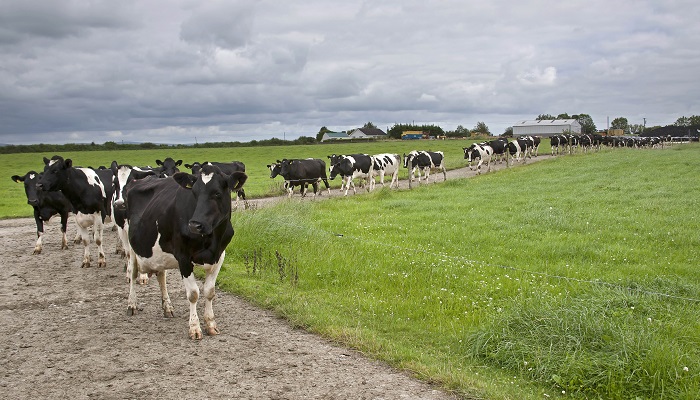25 August 2024
Bovine TB in dairy herds: Taking action to reduce the risk of breakdown

Levels of bovine TB have been rising since 2016. In June 2024, 5.12% of herds had a breakdown in the preceding 12 months, with 32,118 reactors in that period. This has resulted in 5,242 herds being restricted.
Dairy herds accounted for 38% of breakdowns in 2023, an increase of 3% over 2022. In 2023, 65% of reactors were in dairy herds, while 25% of reactors were from suckler herds. These figures highlight the need for urgent action by all stakeholders.
Actions which can reduce the risk of introducing TB into your dairy herd
All dairy farmers can protect their cattle from TB by taking the following steps to address the risk factors for a breakdown:
- Consider culling older animals, particularly those that were alive during a previous breakdown. The risk is that some may have undetected TB infections which can re-start a breakdown.
- If you are purchasing breeding animals, ask for the TB herd category of herds from which you intend to purchase from.
- Breeding herds should maintain a closed herd. Cattle exposed to TB recently may have undetected infections and bring the disease into your herd.
- Animals that previously tested inconclusive and subsequently tested clear are at a higher risk of being infected with TB and spreading disease within your herd. These cattle should be culled no later than the end of their current production cycle.
- Look for badger setts and activity on your farm.
- Notify the Department of any setts you find using the badger app available to download at bovinetb.ie.
- Take steps to reduce badger to cattle contact on your farm by securing sheds/ feed stores, raising troughs and fencing off setts and latrines.
- Do not feed concentrates on the ground as badgers can spread saliva in that area while finishing any leftovers, exposing cattle if they then feed off that area again.
- When selecting bulls for breeding use bulls more resistant to TB (breeding value less than 8%). This can reduce the number of exposed cattle which become infected, if your herd does subsequently experience a TB breakdown.
- Ensure good quality testing facilities are available and provide your vet with any assistance required. Each animal must be identified and have its skin thickness measured on both days of the test. If TB is present but is missed, it will spread further within your herd.
- Cleanse and disinfect shared machinery and areas where bTB infected cattle were kept, as the TB bacteria can survive in the environment and cause new infections.
- Maintain good hygiene practices even when your herd is not in a breakdown including regular cleaning and disinfection of feed and water troughs and facilities where cattle are gathered and handled.
- Eliminate contact between cattle and neighbouring farms cattle. Ensure boundary fences are well maintained and avoid mixing groups of cattle which are normally managed separately.
- If you engage in contract rearing, ask the rearer to take steps to reduce TB risk and have a contingency plan for a TB breakdown in either herd.
Challenge
Being free of TB remains critical, from a farm family profitability and sustainability perspective and from a trade perspective. Every TB restriction represents a significant emotional and financial challenge to the farm family concerned.
Working together, we can reduce TB levels, protect cattle from infection, prevent the stress caused by TB on farm families, and mitigate the threat TB poses to our exports. See www.bovinetb.ie for videos, advice, leaflets, and information on how to protect your herd from TB.
This paper by Wila Bruce, Anthony Stringer and Donal Mooney, Department of Agriculture, Food and the Marine, Backweston, Celbridge, Co. Kildare, was first published in the Ballyhaise Open Day 2024 booklet. For more information on the open day, access the full publication here.
